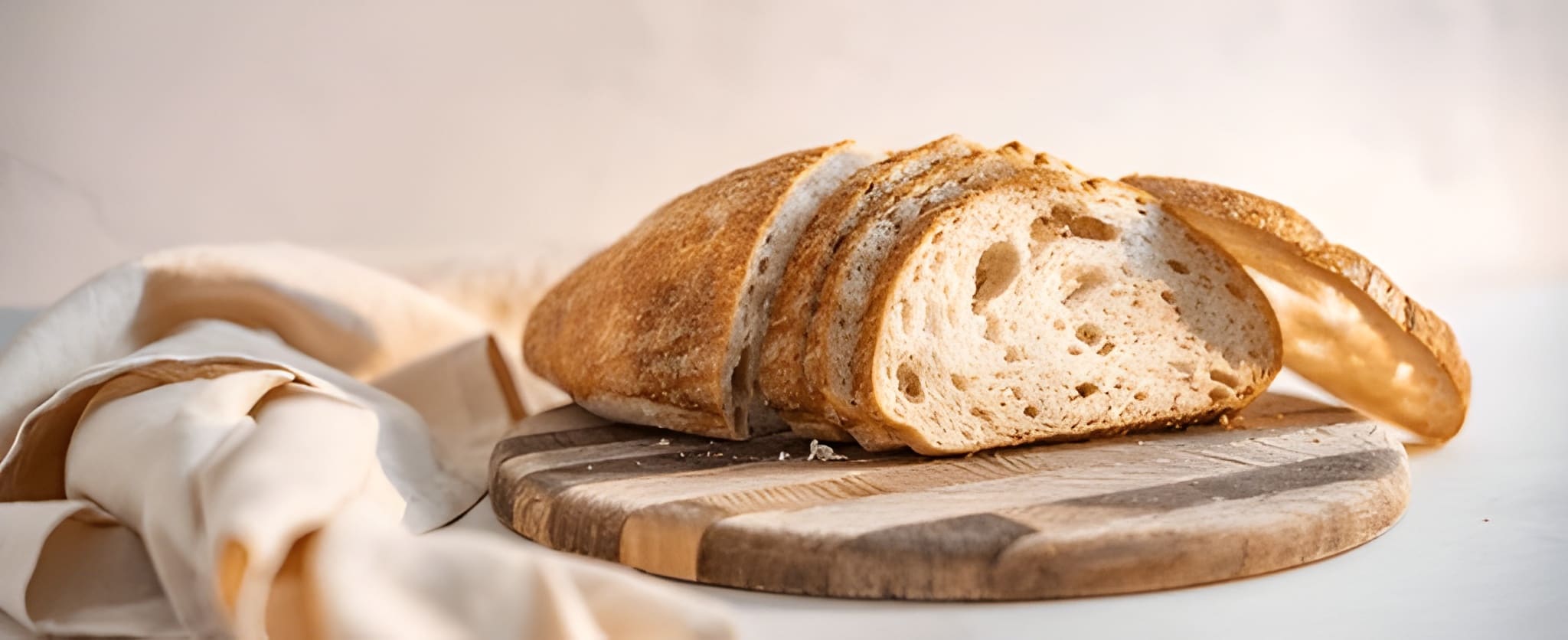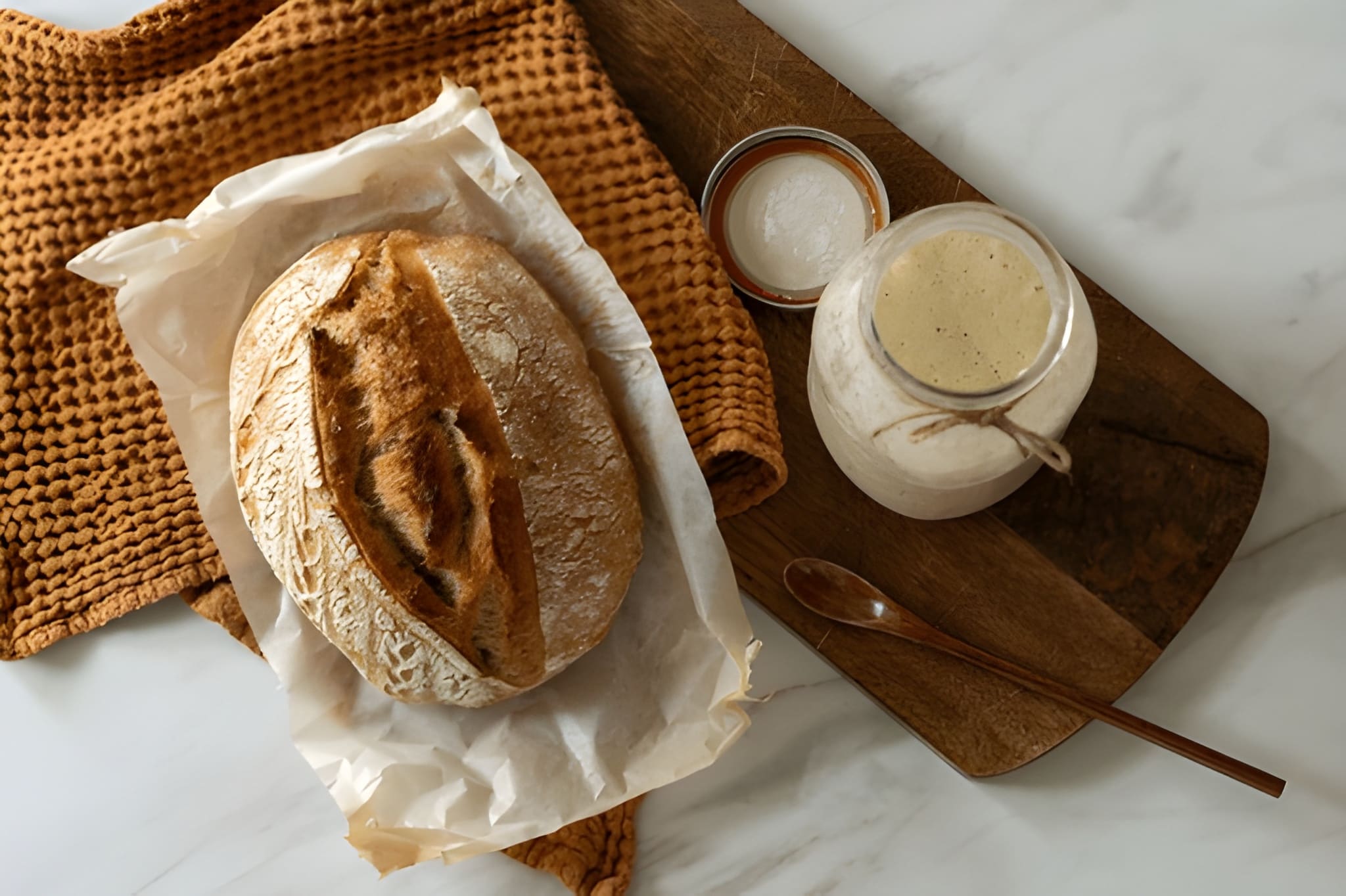Sourdough Bread I is a traditional loaf that relies on wild yeast and lactic acid bacteria from a natural starter instead of commercial yeast. This process gives sourdough its signature tangy flavor, chewy texture, and crisp crust. Baking sourdough at home is both an art and a science—each loaf is unique and rewarding.

Sourdough Bread I:
The process takes time but yields a deeply flavorful bread with great texture and aroma. It’s perfect for toast, sandwiches, or served warm with butter. The slow fermentation also improves digestibility and keeps the bread fresh longer.
History of Sourdough Bread I :
Sourdough is one of the oldest forms of leavened bread, dating back over 5,000 years to ancient Egypt. Before the invention of commercial yeast, all bread was naturally leavened—made using a mixture of flour and water that captured wild yeasts from the environment. This natural fermentation process gave rise to the unique tangy flavor and airy texture we now associate with sourdough.
Subscribe to our youtube channel Kitchenpedia for more delicious recipes and hit the like button if you enjoyed this youtubevideo. Share it with your friends and Family.
Sourdough Bread I
Ingredients
- 1 cup (227 g) active sourdough starter
- 1 ½ cups (340 g) warm water
- 4 cups (480 g) all-purpose or bread flour
- 2 teaspoons salt
Instructions
- Mix the Dough:In a large bowl, mix the active starter with warm water until dissolved. Add flour and salt. Stir until a shaggy dough forms.
- Knead:Knead the dough on a floured surface for 10 minutes, or until smooth and elastic. Alternatively, stretch and fold the dough several times over 2 hours.
- Bulk Fermentation:Place dough in a lightly oiled bowl, cover, and let rise at room temperature for 8–12 hours, or until doubled in size and bubbly.
- Shape:Gently deflate and shape into a round or oval loaf. Place seam side up in a floured proofing basket or bowl. Cover and let rest 2–4 hours, or until puffy.
- Preheat Oven:Preheat oven to 450°F (230°C) with a Dutch oven inside for at least 30 minutes.
- Bake:Transfer dough into the hot Dutch oven, score the top, cover, and bake for 30 minutes. Remove lid and bake for another 10–15 minutes until golden brown and crisp.
- Cool:Let the loaf cool completely on a wire rack before slicing.
Notes
- Use an active, bubbly starter for best results.
- Longer fermentation = deeper flavor.
- For extra crunch, mist the dough with water before baking.
- Let the bread cool fully to avoid gummy texture.
- Store at room temperature in a paper bag for up to 3 days.
Tips for Sourdough Bread I:
- Add a handful of whole wheat flour for a rustic touch.
- Use filtered or dechlorinated water—chlorine can harm wild yeast.
- Practice patience: sourdough improves with experience.
- For a more sour taste, ferment the dough longer or refrigerate overnight.
- Slice and freeze leftovers to preserve freshness.
FAQs for Sourdough Bread I:
Q1: Can I use whole wheat flour?
Yes! Replace up to 50% of white flour with whole wheat for a denser, earthier loaf.
Q2: Why didn’t my bread rise enough?
The starter may have been inactive or fermentation too short—make sure it’s bubbly and doubles before use.
Q3: Can I skip the Dutch oven?
Yes, bake on a preheated baking stone with steam (a pan of water in the oven).
Q4: How do I store sourdough bread?
Keep it wrapped in a cloth or paper bag at room temperature. Avoid plastic—it makes the crust soft.
Q5: Can I refrigerate the dough overnight?
Absolutely. Cold fermentation develops stronger flavor and structure.
Conclusion:
Sourdough Bread I is a timeless, slow-fermented loaf made from natural yeast. Its tangy taste, crisp crust, and chewy crumb make it a bakery-quality bread you can craft at home. Though it takes patience, the reward is worth every minute.

